
What is in this article?
Recycling is considered to be one of the biggest contributors of the sustainability concept, which has become a hot-button issue in recent years. Increasing population and developing industry cause an increase in emissions and thus pollution of the environment. All these developments can lead to negative consequences, such as reduced biodiversity, negative impacts on human health and depletion of natural resources.
Recycling, on the other hand, contributes to reducing harmful impacts precisely because every material that is recycled is made reusable often limiting the consumption of new resources and preventing emissions in production. It also benefits both individuals and organizations financially.
Let’s take a look at the details to learn all about the advantages of recycling, which helps future generations live a good life and protects the living population, and what you can achieve by recycling.
What is Recycling?
Recycling is basically the process of reusing materials. Recycling, which also means a second life for things, means benefiting from materials that can be recycled for other purposes or reused for the same purpose.
In most cases, a condition for recycling is the pre-sorting of basic materials such as glass, paper, plastics, textiles and metals. These basic materials can then be reused as raw materials in the production process. However, recycling is different from reusing or avoiding waste.
With reuse, products (or parts thereof) are reused without being separated into raw materials. Thanks to recycling, the product is processed so that something new can be made from it. The raw materials that are usually recycled are glass, plastic and paper. There are two ways to recycle raw materials:
- Recycling for a similar purpose: This form of recycling involves turning raw materials such as glass, paper and plastic into new products made from these materials. If the quality of the recycled products is lower than the quality of the original raw material, this is also called downcycling. Examples include making plastic bottles, packaging, bags and boxes from plastic bottles.
- Recycling for another purpose: For example, plastic can be made from oil and then burned for energy. This type of recycling can also be done with wood. Wooden pallets can be used as firewood or biomass in power plants. Or textile waste can be used as insulation and padding or used to make paper.
Purpose and Importance of Recycling
In 1950, the amount of plastic produced worldwide was 1.5 million tons, while the total production in 2018 was calculated as 359 million tons of plastic. This means that the amount of plastic waste has increased exponentially over the years.
Recycling is an important part of protecting the environment. By properly recycling and reusing waste, it is certainly possible to reduce the amount of environmentally harmful waste that ends up in landfills, lives in oceans and damages ecosystems. Recycling the used paper products, for example, reduces air pollution by 73% and water pollution by 35%. Recycling used steel, on the other hand, reduces mining waste by about 97% compared to using zero raw materials.
Plastics are an important part of daily life and involved in almost all areas of industry. Plastic products are non-biodegradable and account for a large portion of waste. The economic and environmental importance of recycling and reusing these waste products is obvious. When tons of plastics are recycled, the consumption of oil and water resources is reduced.
The main benefit of recycling is that the need for new raw materials is less. The reduced demand ensures that less gasoline is used, while preventing too many trees from being cut down. This gives nature relative protection. Indirectly, it creates a smaller carbon footprint. The main benefits that can be achieved through recycling are as follows.
- The recycling process helps reduce pollution in several ways.
- It reduces the need to extract, process, and produce new raw materials. This limits greenhouse gas emissions and other pollutants released during the extraction and production of new materials.
- The need for energy-intensive processes such as mining, logging, and agriculture is reduced. This also reduces greenhouse gas emissions and other pollutants released by these processes.
- Since waste can be recycled in a variety of ways, energy generation from waste is also possible. It thus contributes to the production of blue or green energy (renewable energy), especially grey energy (energy with high carbon emissions during production).
What is the 3R Rule?
The 3R rule, i.e. the basis of recycling, is related to the waste hierarchy. Such hierarchy, which is developed to reduce the amount of waste collected and maximize the benefits from waste, consists of 3Rs.
3R refers to reduce, reuse and recycle. The basis of recycling is to produce less waste, reuse an item or material to get the maximum benefit from it, and ensure that it can be used again and again through recycling. 3R thus makes an important contribution to the conservation of natural resources, renewable energies and landfills.
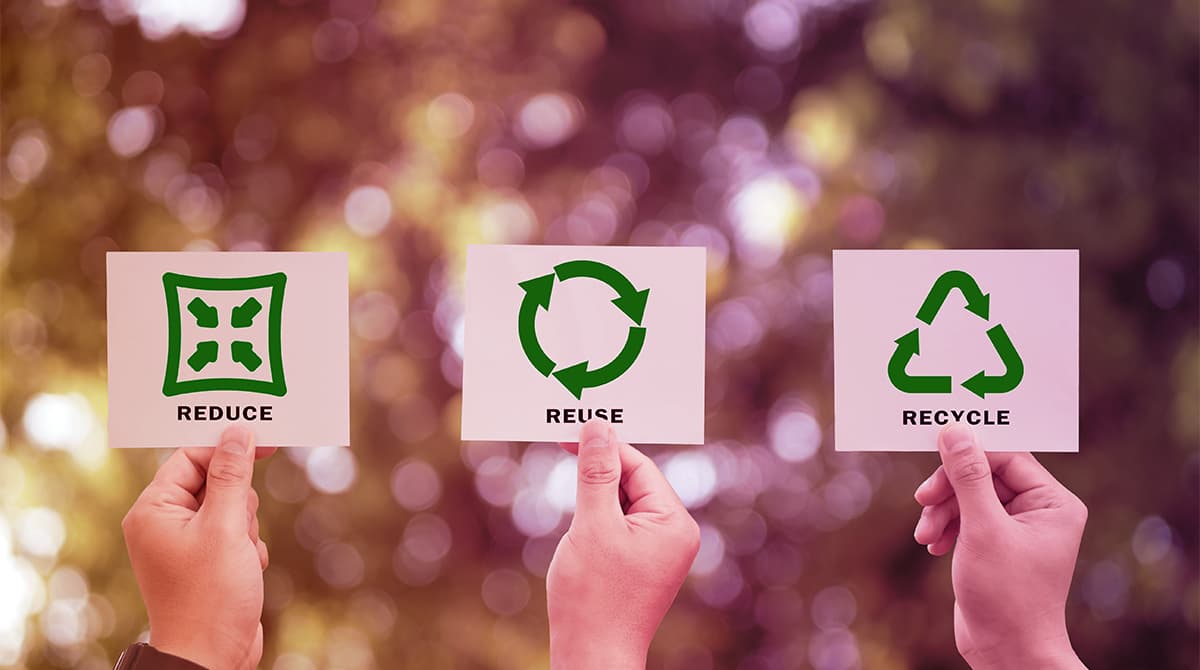
History of Recycling
The history of recycling is actually older than we think. Due to limited resources, the use of recycled materials dates back to 1031. This is the oldest date based on written sources. It is estimated that people recycled and reused products such as paper even earlier.
The fact that resources are limited and production processes are quite lengthy has led people to recycle. For example, the paper used in Japan in 1031 was recycled and reused as paper. Another source refers to the Rittenhouse mill founded in 1690. This mill was established to produce recycled paper. Used cloth, cotton and linen were used to make paper for printing and publishing.
What are Recyclable Materials?
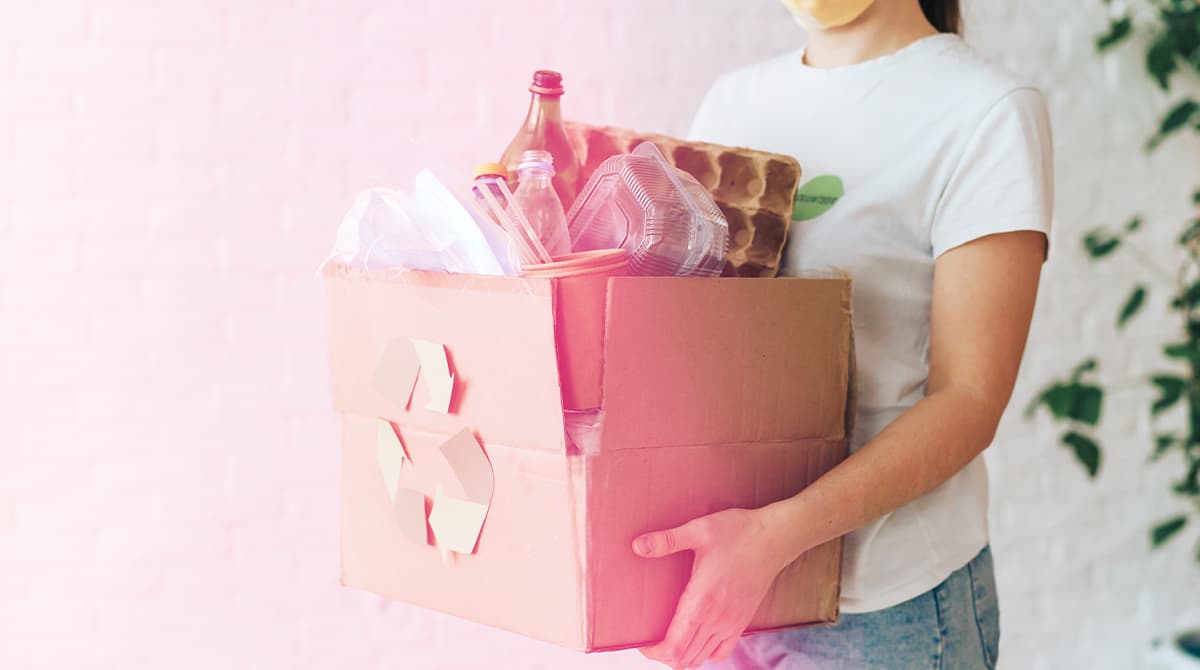 Paper, metal, motor oil, glass, cardboard, aluminum, polystyrene, green waste, wood, plastic batteries - all these are well-known and most common recyclable materials. But electronic devices are also part of recycling, as all materials can be taken out for reuse.
Paper, metal, motor oil, glass, cardboard, aluminum, polystyrene, green waste, wood, plastic batteries - all these are well-known and most common recyclable materials. But electronic devices are also part of recycling, as all materials can be taken out for reuse.
Beverage cartons such as milk and juice boxes can also be recycled. But all waste must be clean. Otherwise, a lot of water is used and recycling becomes more expensive.
Aluminum trays, cans and all tins can be recycled. Glasses, bottles, plates, lamps and chandeliers can also be easily recycled. Clothing and textile products are usually offered for sale second-hand, but all other textiles that can no longer be used can also be recycled.
Some well-known brands use varying proportions or completely recycled fabrics or plastics for their textile products. These products are labelled as recycled.
Recycling-Symbols
Recycling symbols provide information about materials and recycling, as these symbols are often found on products and waste containers, indicating which material should be disposed of in which type of container. Let’s look at the meaning of symbols:
- The Recycling Symbol (Mobius Loop): Consists of three arrows rotating clockwise. It indicates whether the product can be recycled, but does not necessarily have to be made from recycled materials. The arrows in the symbol indicate all phases of recycling, such as collection-separation, conversion and use respectively.
- % Recycling Symbol: Indicates which part of the product is made from recycled material. Next to the symbol is the percentage of recycling.
- Paper and Cardboard Symbol: This packaging can be recycled together with the paper. However, the symbol does not indicate that the packaging of the product is made of recycled paper or cardboard.
- Glass Waste Symbol: Can be found on one-way glass packaging. It means that the packaging belongs to the glass bank and is recycled. Materials other than glass, such as lids and packaging, are separated, and if they are colored, they are categorized and recycling is started.
- Plastic Recycling Symbol: The plastics industry has a coding system that helps recyclers sort plastic products. They have packaging called PET, HDPE, PVC, LDPE, PP, PS etc. Each is coded from 1 to 7 respectively and refers to the type of plastic the packaging is made of.
- Do Not Throw in the Waste Bin Symbol: Indicates that certain wastes must not be disposed of in the waste bin. This applies, for example, to batteries, energy-saving light bulbs, leftover paint and medicines, as these are classified as small chemical waste.
- Green Dot: The Green Dot is a symbol used on packaging in some European countries to indicate that the producer has made a financial contribution to the recycling of packaging.
- Seedling Logo and Compostable Symbol: There is more than one symbol for compostable products that can naturally break down into fertilizer, indicating that this type of waste is 100% biodegradable. The Seedling logo only covers compostable packaging, while the Home label means that the products can be composted at home.
- E-Waste Symbol: The e-waste symbol warns against “throwing in the bin” because electronics that contain electronic parts or broken electronics should not be thrown away. Municipalities have solutions for such products and they can be dropped off free of charge at the relevant department of the municipality.
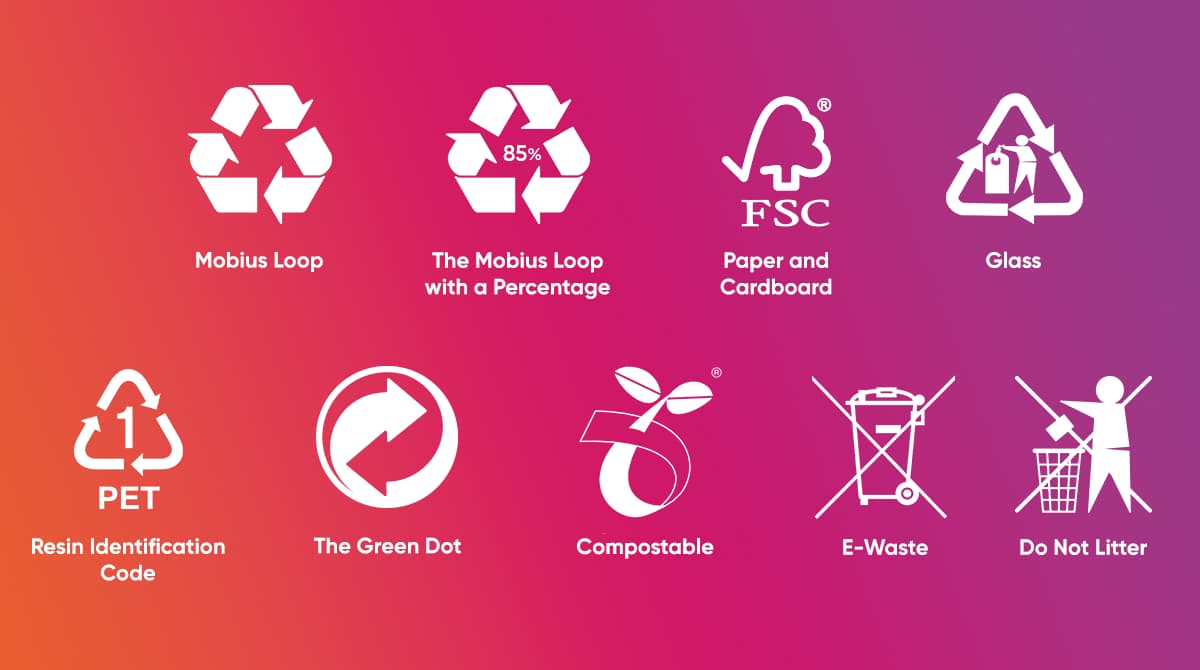
What Happens to Materials that Cannot be Recycled?
Although recycling offers many benefits for nature and living beings, it does not mean that you can throw everything in the recycling bin. It is not possible to separate everything into plastic, cardboard or green waste. Although guidelines vary slightly from country to country and even city to city, some materials are generally not recyclable.
For example, nappies, wet wipes, contaminated plastics, glass and plastic waste that has come into contact with food waste, and disposable cups are not recyclable. The life cycle of materials that cannot be recycled has come to an end. For this reason, they are thrown away and destroyed by incineration in plants.
What Processes Does Recycling Involve?
Recycling starts with separation. Collecting and sorting waste is important so that these materials can be used effectively in the production processes of new products. Therefore, proper recycling depends on waste separation. This waste separation is based on raw materials such as glass, plastic and paper. The recycling processes also differ according to the material in question. Recycling by raw materials is done as follows:
- Glass: Glass containers are taken to the glass factory. All glassware is broken and cleaned of non-glass foreign matter. They are categorized by machinery according to color. Each color is melted separately in the furnace and poured into hot containers and molded.
- Plastics: Plastics are collected in the same way and delivered to the factory. It is tested whether they are clean or not. They are crushed into small flakes and washed. The paper in the packages rises to the surface of the water. The plastic pieces are then poured into the water tank and the non-plastic pieces are filtered. The remaining plastic is melted, at times new plastic is added to make bottles.
- Paper: After arriving at the paper processing plants, it is kneaded with water to make pulp. The pulp is cleaned of ink and adhesives, and at times cellulose is added. The pulp is crushed and stratified.
- Wood: Items made from wood are separated from plastic or metal attachments and used as fuel or to make new items depending on their form.
- Organic Raw Materials: Organic waste consists of the pulp and peels of foods such as vegetables and fruits, which are separated as waste after cooking. These wastes are composted and used as fertilizer. Thus, no extra waste is generated and the use of chemical or animal fertilizers is kept limited.
Why is Sorting Important in Recycling?
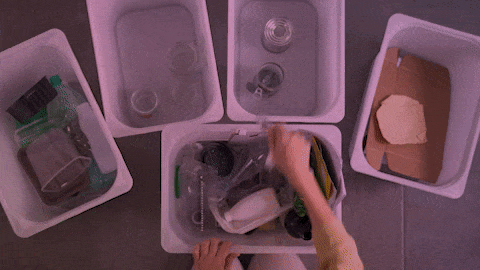 The most important stage of recycling is separation, as recyclable materials are damaged and marked as garbage when no separation is made. For this reason, the separated wastes should not be together with too many mixed materials and pollutants (such as chemicals, food waste) in order to be reused.
The most important stage of recycling is separation, as recyclable materials are damaged and marked as garbage when no separation is made. For this reason, the separated wastes should not be together with too many mixed materials and pollutants (such as chemicals, food waste) in order to be reused.
Domestic waste in particular must be separated before disposal as it is exposed to too many pollutants.
For example, paper is difficult to recycle if it contains a lot of plastic, because in order to start recycling, a recycling company must remove the contaminated parts from the collected waste before it can start processing.
This leads to many losses, especially financial and time. There may not be enough recycling to be sustainable and resources will continue to be depleted and nature will continue to be polluted.
What Can We Do Individually to Recycle?
 Recycling is a sustainability movement that can be practiced not only by large factories and production facilities but also by individuals, because household waste also pollutes nature and contaminates many materials that can actually be recycled. In addition, the amount of garbage each individual creates annually is not insignificant.
Recycling is a sustainability movement that can be practiced not only by large factories and production facilities but also by individuals, because household waste also pollutes nature and contaminates many materials that can actually be recycled. In addition, the amount of garbage each individual creates annually is not insignificant.
Therefore, as an individual, you can do a lot. For example, you can first sort and bag your waste and put material suitable for recycling in the appropriate bins.
You can compost your organic kitchen waste such as vegetables and fruit and use it as fertilizer for your own plants. But waste prevention also supports recycling.
For example, choose glass instead of disposable plastic cups and containers. Avoiding packaged convenience foods also contributes to your health and recycling.
Recycling in Houses And Flats
The basis of recycling in houses and flats is waste separation. For this reason, you should pay special attention to recycling waste from the bathroom and kitchen areas:
- You can make a good start by separating organic waste from vegetables, fruit or animal origin from inorganic waste such as batteries, plastic or paper. You can also encourage residents to recycle by informing them about it.
- Involve the whole family in recycling. It is very important to teach children about recycling so that they can integrate it into their daily lives.
- Do not allow large amounts of waste to accumulate in your home. Make sure that the waste you have categorized ends up in the right areas of the containers.
- Clean waste is much easier to recycle. It is therefore advisable to remove some waste that could hinder the recycling process.
Recycling in Workplaces
Workplaces can recycle in different ways depending on the use of the raw materials. For example, offices generate huge amounts of paper and electronic waste. These can be collected and disposed of in paper containers. Electronics can be given to the relevant organizations (municipal waste recycling departments can also be used) according to the procedures.
Separation of plastics is also an important part of the list of what can be recycled at work. However, in the case of specific workplaces, such as textile workshops, recycling is carried out according to the raw material at hand. Leftover fabrics can be sorted and sent to recycling centers for insulation or paper.
You can share with us the recycling methods/techniques you apply in your homes and workplaces, and you can ensure that more people are inspired by your recycling ideas by dropping your comments.

 Online Services
Online Services Application Inquiry
Application Inquiry Pay Assurance Fee
Pay Assurance Fee Query Installation Number
Query Installation Number Compensation Fee Inquiry
Compensation Fee Inquiry Automatic Payment Order Inquiry
Automatic Payment Order Inquiry Partnership
Partnership



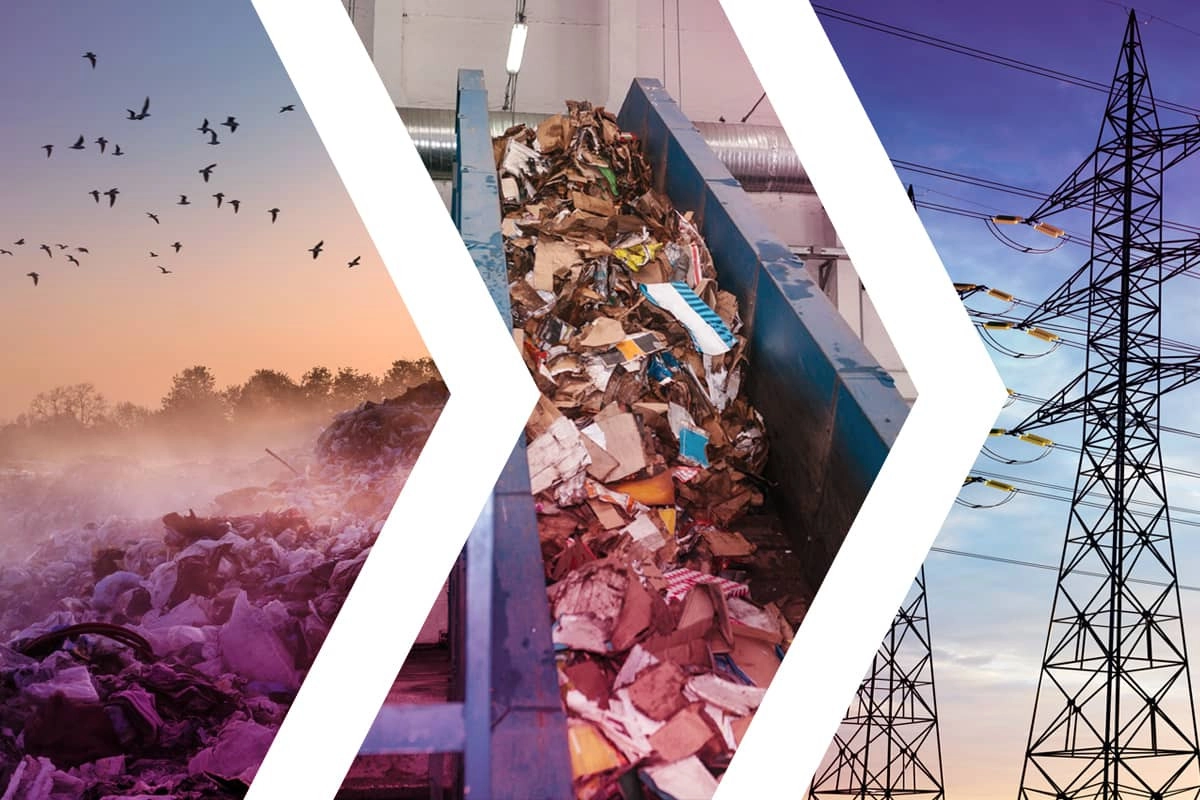


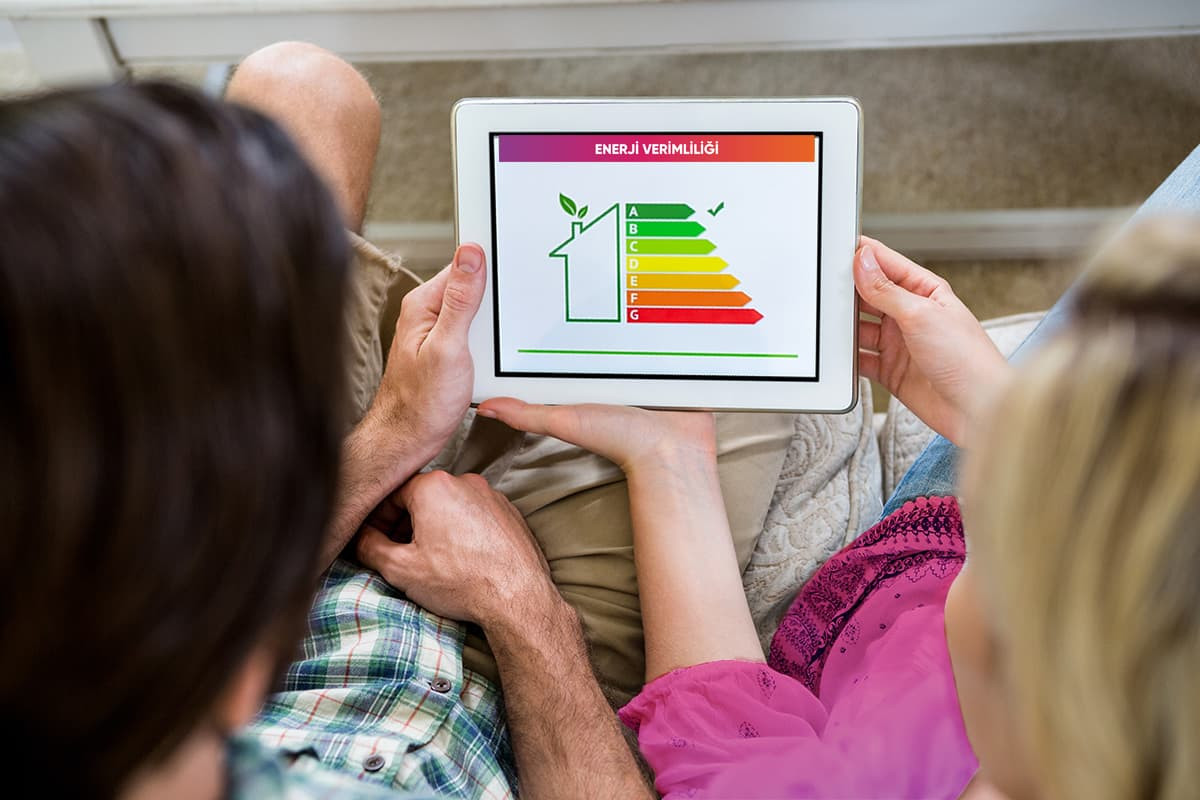
Leave a Comment